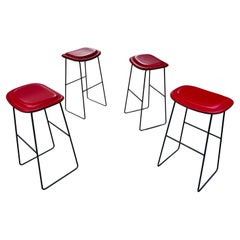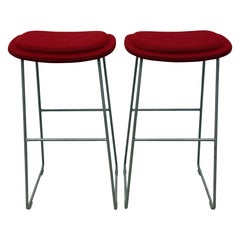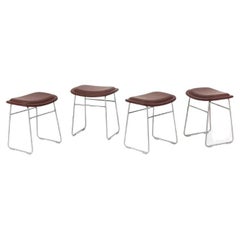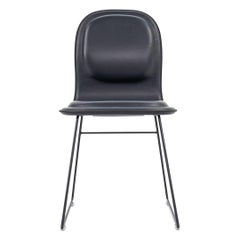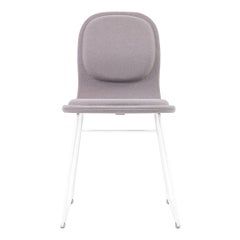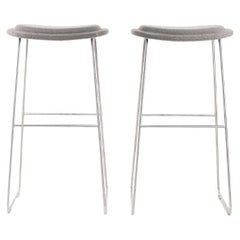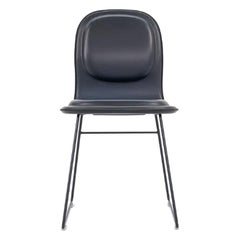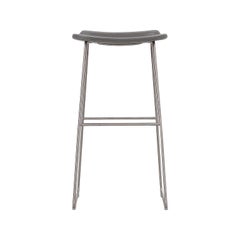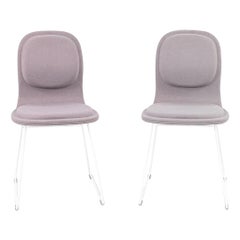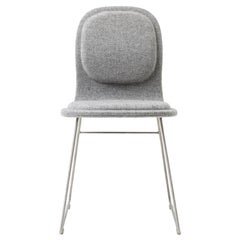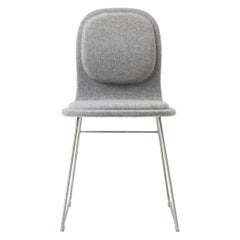Jasper Morrison Hi Pad
Early 2000s Italian Modern Stools
Stainless Steel
Late 20th Century Italian Modern Stools
Steel
2010s Italian Modern Stools
Stainless Steel
2010s Italian Modern Side Chairs
Stainless Steel
2010s Italian Modern Side Chairs
Stainless Steel
2010s Italian Modern Stools
Steel
2010s Italian Modern Side Chairs
Stainless Steel
2010s Italian Modern Stools
Steel
2010s Italian Modern Side Chairs
Stainless Steel
Recent Sales
21st Century and Contemporary Italian Modern Chairs
Foam, Beech, Plywood
21st Century and Contemporary Italian Modern Chairs
Foam, Beech, Plywood
21st Century and Contemporary Italian Modern Stools
Foam, Beech, Plywood
21st Century and Contemporary Italian Modern Stools
Foam, Beech, Plywood
21st Century and Contemporary Italian Modern Stools
Foam, Beech, Plywood
21st Century and Contemporary Italian Modern Stools
Foam, Beech, Plywood
21st Century and Contemporary Italian Modern Stools
Foam, Beech, Plywood
21st Century and Contemporary Italian Modern Stools
Foam, Beech, Plywood
1990s Italian Chairs
Stainless Steel
1990s Italian Chairs
Stainless Steel
1990s Italian Chairs
Stainless Steel
20th Century Italian Modern Dining Room Chairs
Late 20th Century Modern Dining Room Chairs
Metal
Late 20th Century Italian Dining Room Chairs
Felt, Rubber
20th Century Italian Modern Stools
Stainless Steel
People Also Browsed
21st Century and Contemporary Swedish Mid-Century Modern Table Lamps
Textile
21st Century and Contemporary American Mid-Century Modern Wall Lights an...
Brass
2010s American Modern Stools
Wood, Oak
Jasper Morrison Hi Pad For Sale on 1stDibs
How Much is a Jasper Morrison Hi Pad?
Jasper Morrison for sale on 1stDibs
For all the people who think designer objects need to make bold statements with attention-grabbing forms and materials, the revered British designer Jasper Morrison has a message: The quieter objects are often the better products.
Some of Morrison’s earliest creations, such as the 1986 Thinking Man’s chair, with its snaking tubular steel armrests, and the 1991 3 sofa deluxe, whose sculpted seat resembles an enormous wave (both produced by the Italian manufacturer Cappellini, one of the planet's preeminent producers of cutting-edge home decor), display the eye-catching moves that were expected among his contemporaries.
At the same, Morrison was clearly searching for a different language. In 1988, just three years after he graduated from London’s Royal College of Art, he stunned many in the design world with “Some New Items for the Home,” an exhibition in Berlin featuring simple plywood furniture he had designed and made himself as a direct rebuke to the over-the-top colors and geometries of the Memphis movement. As Morrison increasingly came to see statement-making design as flawed and wasteful, he began producing the subtler objects that eventually became his greatest hits and inspired a new generation of designers.
Morrison’s Glo-Ball lamps for FLOS, for instance, feature opalescent blown-glass diffusers that resemble ever-so-slightly squished spheres with a striking visual softness. Designed in 1998, the pieces were instantly popular and have remained a best seller for the legendary Italian lighting maker. Morrison’s Cork Family stools for Vitra, designed in 2004, have proved similarly timeless, with simple silhouettes reminiscent of thread spools whose unexpected material — solid cork — makes them particularly alluring.
By 2005, Morrison had befriended another designer working in a similar manner — Japan’s Naoto Fukasawa. That year, Fukasawa introduced his Déjà-vu stool for Magis at the Salone del Mobile in Milan and was dismayed when fairgoers barely noticed it. Crestfallen, Fukasawa talked to Morrison, who saw the scenario differently: The fact that people instinctively used the stool meant that it was successful. To cheer up Fukasawa, Morrison described his design as “super normal.” Morrison and Fukasawa latched onto this phrase as an ideal term for what they were up to.
Launched in 2006, Morrison and Fukasawa’s “Super Normal” — a traveling exhibition and a book that served as a visual manifesto — documented more than 200 utilitarian yet beautiful objects, ranging from a paper clip, a plastic bucket and a ballpoint pen to an Alessi citrus basket, Vitsoe’s 606 universal shelving system by Dieter Rams and Vitra’s Joyn office system by Ronan and Erwan Bouroullec. That same year, Morrison began playing with extreme simplicity and introduced the Crate, a wooden bedside table for Established & Sons that was modeled on an old wine crate he used for his own bedside table.
Today, Morrison delights in finding the correct balance in his designs, turning out products that seem appealingly natural and precisely what they should be.
Find Jasper Morrison chairs, lighting, stools and other furniture for sale on 1stDibs.
A Close Look at Modern Furniture
The late 19th and early 20th centuries saw sweeping social change and major scientific advances — both of which contributed to a new aesthetic: modernism. Rejecting the rigidity of Victorian artistic conventions, modernists sought a new means of expression. References to the natural world and ornate classical embellishments gave way to the sleek simplicity of the Machine Age. Architect Philip Johnson characterized the hallmarks of modernism as “machine-like simplicity, smoothness or surface [and] avoidance of ornament.”
Early practitioners of modernist design include the De Stijl (“The Style”) group, founded in the Netherlands in 1917, and the Bauhaus School, founded two years later in Germany.
Followers of both groups produced sleek, spare designs — many of which became icons of daily life in the 20th century. The modernists rejected both natural and historical references and relied primarily on industrial materials such as metal, glass, plywood, and, later, plastics. While Bauhaus principals Marcel Breuer and Ludwig Mies van der Rohe created furniture from mass-produced, chrome-plated steel, American visionaries like Charles and Ray Eames worked in materials as novel as molded plywood and fiberglass. Today, Breuer’s Wassily chair, Mies van der Rohe’s Barcelona chair — crafted with his romantic partner, designer Lilly Reich — and the Eames lounge chair are emblems of progressive design and vintage originals are prized cornerstones of collections.
It’s difficult to overstate the influence that modernism continues to wield over designers and architects — and equally difficult to overstate how revolutionary it was when it first appeared a century ago. But because modernist furniture designs are so simple, they can blend in seamlessly with just about any type of décor. Don’t overlook them.
Finding the Right Seating for You
With entire areas of our homes reserved for “sitting rooms,” the value of quality antique and vintage seating cannot be overstated.
Fortunately, the design of side chairs, armchairs and other lounge furniture — since what were, quite literally, the early perches of our ancestors — has evolved considerably.
Among the earliest standard seating furniture were stools. Egyptian stools, for example, designed for one person with no seat back, were x-shaped and typically folded to be tucked away. These rudimentary chairs informed the design of Greek and Roman stools, all of which were a long way from Sori Yanagi's Butterfly stool or Alvar Aalto's Stool 60. In the 18th century and earlier, seats with backs and armrests were largely reserved for high nobility.
The seating of today is more inclusive but the style and placement of chairs can still make a statement. Antique desk chairs and armchairs designed in the style of Louis XV, which eventually included painted furniture and were often made of rare woods, feature prominently curved legs as well as Chinese themes and varied ornaments. Much like the thrones of fairy tales and the regency, elegant lounges crafted in the Louis XV style convey wealth and prestige. In the kitchen, the dining chair placed at the head of the table is typically reserved for the head of the household or a revered guest.
Of course, with luxurious vintage or antique furnishings, every chair can seem like the best seat in the house. Whether your preference is stretching out on a plush sofa, such as the Serpentine, designed by Vladimir Kagan, or cozying up in a vintage wingback chair, there is likely to be a comfy classic or contemporary gem for you on 1stDibs.
With respect to the latest obsessions in design, cane seating has been cropping up everywhere, from sleek armchairs to lounge chairs, while bouclé fabric, a staple of modern furniture design, can be seen in mid-century modern, Scandinavian modern and Hollywood Regency furniture styles.
Admirers of the sophisticated craftsmanship and dark woods frequently associated with mid-century modern seating can find timeless furnishings in our expansive collection of lounge chairs, dining chairs and other items — whether they’re vintage editions or alluring official reproductions of iconic designs from the likes of Hans Wegner or from Charles and Ray Eames. Shop our inventory of Egg chairs, designed in 1958 by Arne Jacobsen, the Florence Knoll lounge chair and more.
No matter your style, the collection of unique chairs, sofas and other seating on 1stDibs is surely worthy of a standing ovation.
